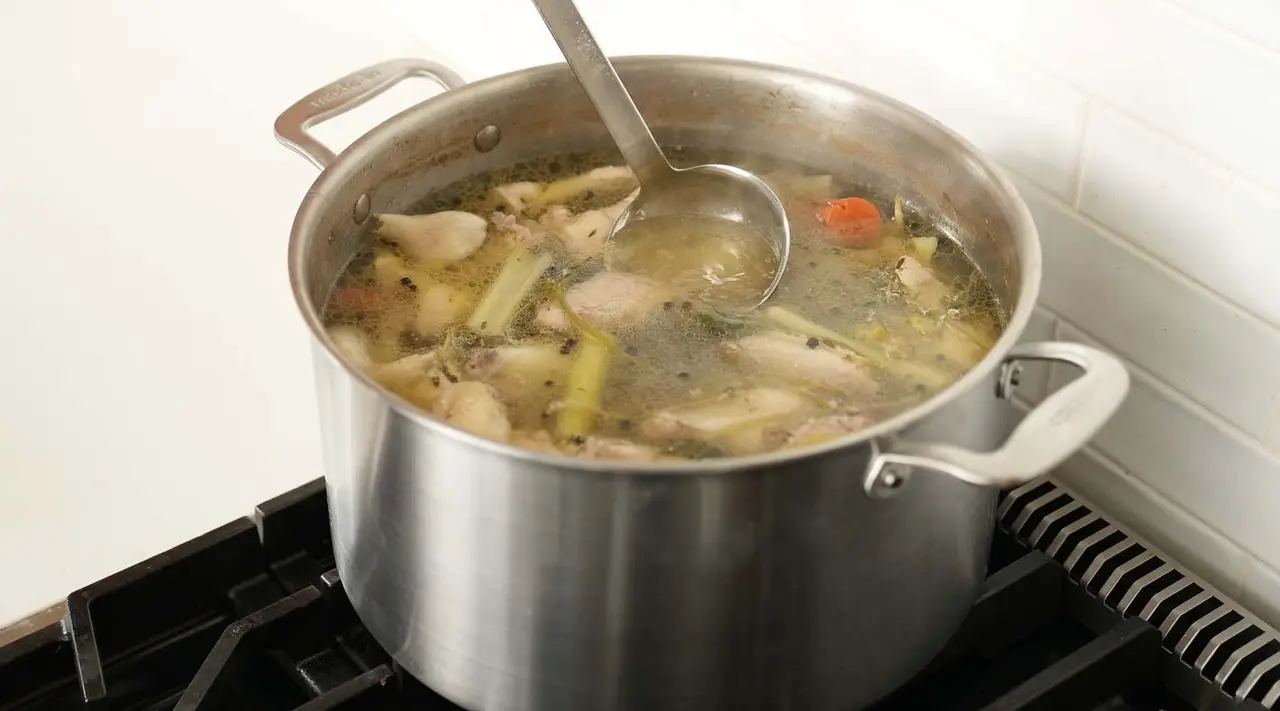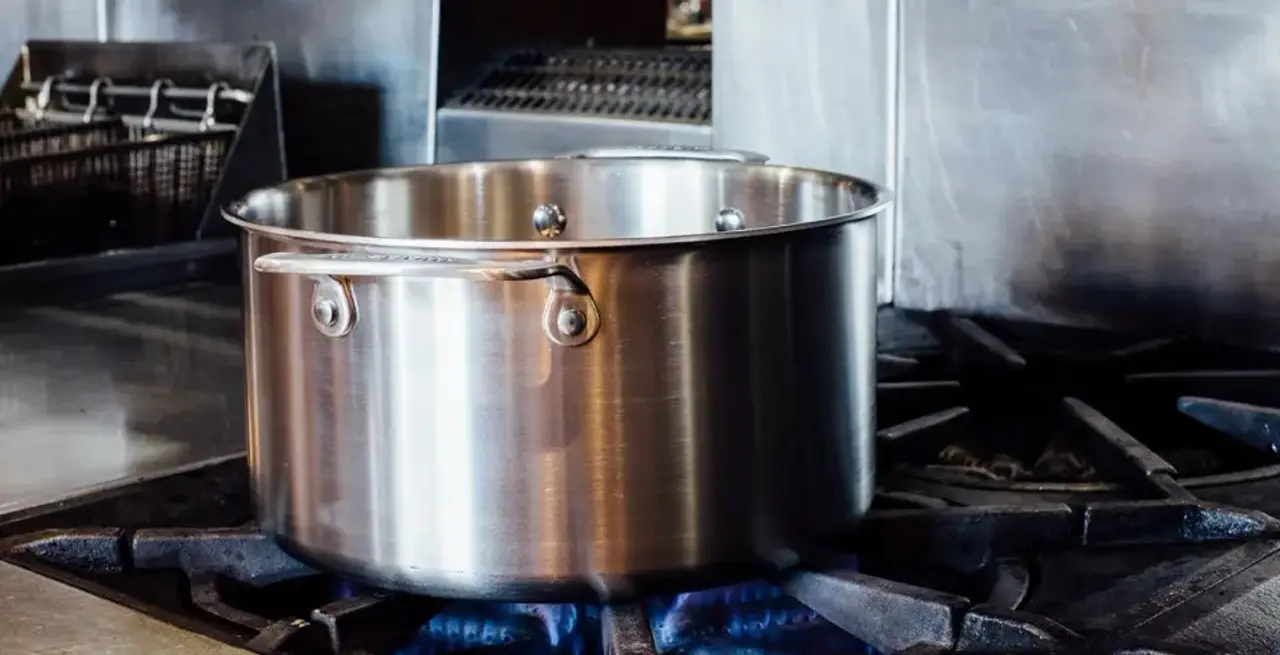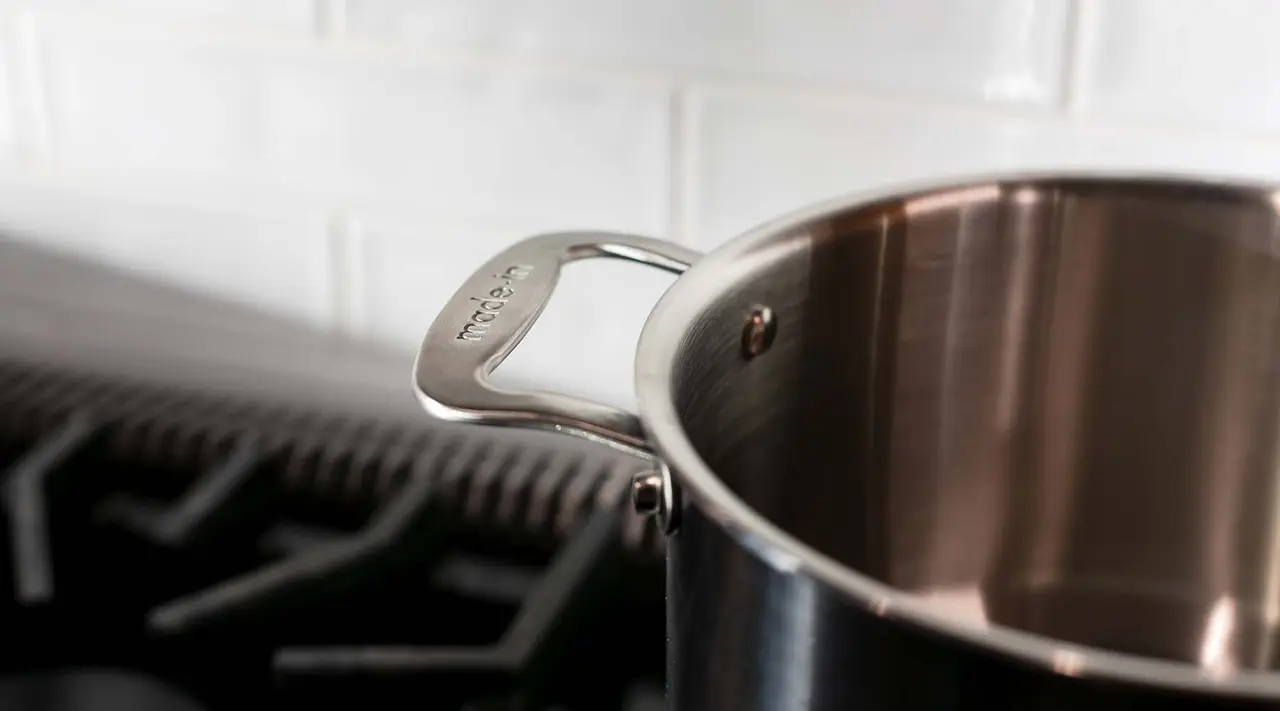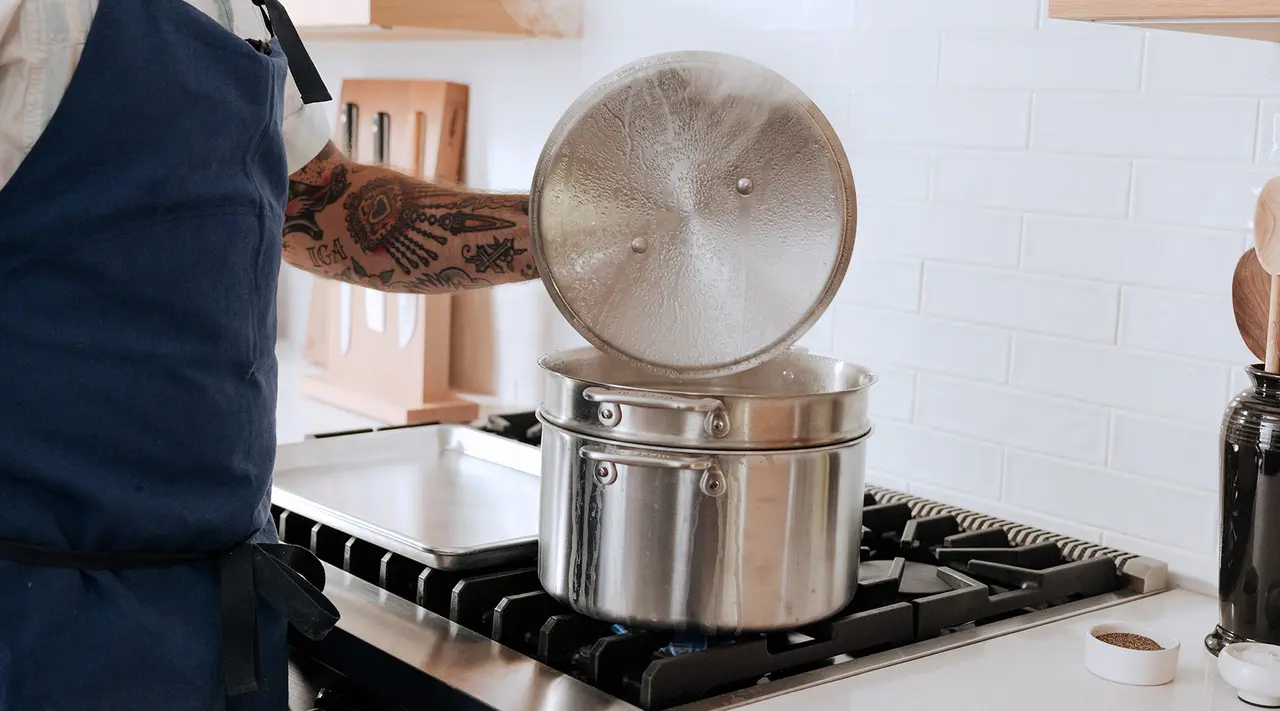There are a few pieces of cookware that are viewed as nonnegotiables in any kitchen, and stock pots are among the few deemed as necessary as a good knife and frying pan. Since stock pots come in a wide range of sizes—as small as 6 QTs to as large as 32 QTs—one of the hardest parts of buying one is finding the right size for your cooking needs. It's a fine line to walk: both too large or too small can lead to inefficient cooking, whether it’s vegetables steaming when they should be searing or liquid evaporating too quickly.
Here's everything you need to know about making sure you have the right-sized stock pot in your kitchen.
Understanding Stock Pots

A stock pot is a large, cylindrical pot with a wide cooking diameter, high walls, and two helper handles that holds the most volume out of any pot or pan you’ll find in a kitchen. Stock pots have a wide number of versatile uses in the kitchen, including making stock, cooking chili and soup, boiling pasta, and other cooking tasks requiring a large volume of liquid.
Stock pots are most commonly made from durable stainless steel, as this material can handle the high heat necessary to boil liquid. While stainless is by far the most common material, some stock pots come coated with materials like non stick or enamel.
Ours is made from our Award-Winning Stainless Clad and features a 5-ply construction consistent throughout the entire body, rather than just the base. This allows for even heating throughout the whole dish, rather than just heating the bottom, which can lead to burnt ingredients.
Common Stock Pot Sizes

Stock pots come in a variety of sizes, and using one that is either too big or too small can hurt your cooking, like causing ingredients to steam rather than sear or liquid to evaporate too rapidly. Here's what you need to know about the differences between the most common sizes—6, 8, and 12 QT—so you can decide which one best suits your needs.
6 QT Stock Pot
Best for smaller-volume households and cooking requirements, a 6 QT stock pot is the ideal choice for cooking small amounts of liquid at a time. This is the ideal choice for households and servings of 1-2—any more and you run the risk of having too much food in too small a vessel, which can lead to overflow (and a large mess to clean up).
A smaller 6 QT stock pot can be a fantastic add-on to a larger one (like a 12 QT) so you have all your size bases covered, and gets the job done beautifully for small servings or amounts of food. If you need anything bigger, we recommend going up 2 QTs (they make a difference, promise!) to a mid-size 8 QT option.
8 QT Stock Pot
The most common stock pot size, an 8 QT stock pot is perfect for making eight to twelve servings of soup or chili, boiling one to two boxes of pasta, or making homemade stock from all your scraps. This is commonly thought of as the standard size for stock pots, and works well for households of one or families of four.
Our 8 QT Stock Pot features a cooking surface diameter of 9.75", so you can sear pieces of meat for a stew or brown turkey for chili without the risk of overcrowding the pot.
12 Quart Stock Pot
A 12 QT stock pot has all the functionality of its 8 QT counterpart, just with more cooking space. It is the perfect piece of cookware if you frequently find yourself cooking large amounts of food or cooking for a large number of people.
If a pot this large seems intimidating, keep in mind that just because you have a 12 QT pot doesn’t mean you need to use all 12 quarts of it all the time. But if you have a 6 or 8 QT one and find it inadequate for your large format cooking, then an upgrade is a wise move.
What About Other Sizes?
Stock pots can come in smaller sizes (like 6 QT) or larger sizes (like 24 and 32 QT), but these aren’t as common. Larger sizes are common in restaurant kitchens, while smaller sizes are similar to saucepans (minus the extended handle).
If you're hosting a crawfish boil or a chili-cook off, larger stock pots can commonly be found in restaurant supply stores—just be mindful of the weight, as a stock pot that's empty when it's heavy will be almost impossible to carry once it's full of food.
What's the Best Size?

There is no one-size-fits-all answer for the best size stock pot, and it ultimately boils down to your kitchen size, the amount of food you're cooking, and how many people you're cooking for.
If all else fails (or if that's just too many factors to weigh at the same time), an 8 QT stock pot is a standard, failsafe size that is well-suited for a large number of tasks and volumes, from boiling pasta for two to prepping meal-prep-ready servings of stock.
Ready to Shop?
As you can see, a stock pot is a must-have in any kitchen that excels at jobs only it can do, simply because of its size. So next time you’re making stock on a rainy day or boiling noodles for homemade lasagna, make sure to break out your perfectly-sized stock pot.


























